The following core strength training for triathletes exercises will build power and can be completed at home with no equipment. The exercises have been grouped into upper abdominal, Obliques and lower abdominal. These can be completed in around 10 minutes and increased or decreased depending on your core strength. In terms of frequency recommendation is to conduct this 3-5 times per week.
It can be tempting to purely swim, bike, run as a triathlete but strength training is important to work into your routine. While adding something else in the mix can be daunting with only 10 minutes needed it should be possible to squeeze this in around your normal day.
At the end of the article is a series of FAQs on Core Strength Training for Triathletes together with the 10 minute free workout.
If you have relied on sit-ups for core strength you need to stop relying on this. Sit-ups alone will not be as effective as a structured set of core training exercises as outlined below.
Why are sit-ups bad for you? Go to the end of the article for more information on why sit-ups can be harmful for you and why a core strength training plan is more beneficial.
Research into core strength training
I have been into triathlon for nearly a decade and juggling training around daily life throughout. Core strength training has not been something I have focused on until around 18 months ago. I started doing more research into this with various coaches and using a number of resources to augment my training. When COVID-19 hit earlier this year I used this as my opportunity to really dial up my focus on core strength training in place of swimming. I am really starting to feel the results 6 months into it and returning to swimming amazingly not seen much drop off.
Top 15 Core Exercises for Triathletes
The following 15 exercises include narrative of how to complete each exercise to ensure quality from exercise. For each of these core strength exercises they have suggested duration that you can adapt depending on how hard you find the workout. Above all it is important to focus on your form in completing each exercise rather than the number of duration you achieve. If you can get into a routine of following this triathlon core workout every day it will help across all disciplines.
5 Upper Abs Core Workouts
V-Ups
How to complete this properly – Laying on your back you elevate your feet and upper body in a controlled movement. Reaching out to touch your toes at the peak to then return to a laying position. The “V” is created by your body shape if looking at a side on profile during the exercise.
Complete 10 repetitions.
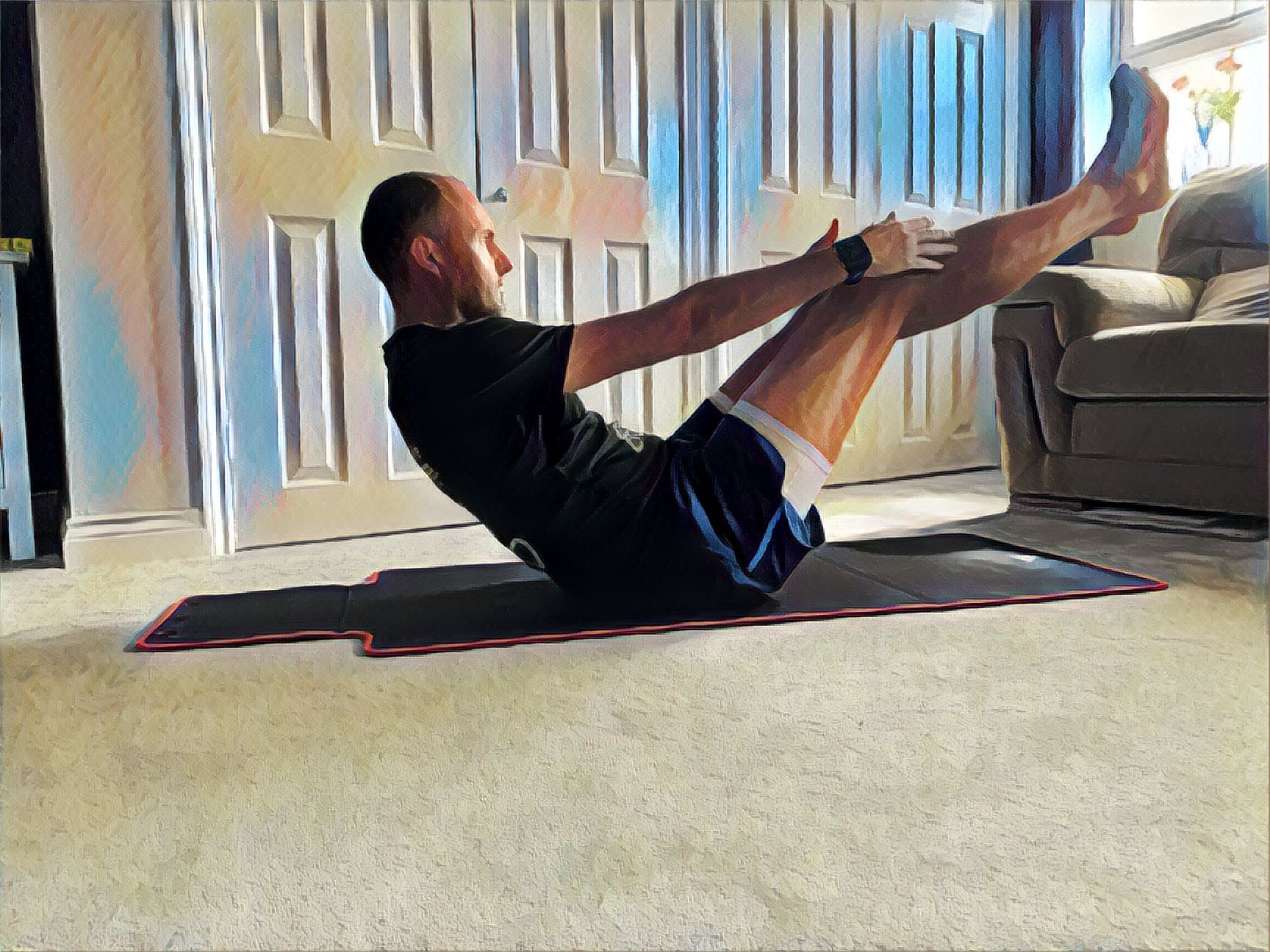
Inverted Toe Touches
How to complete this properly – Laying on your back lift you legs to have them vertically upright. Reach up to touch your toes with minimal leg movement as you do this. If you can elevate your upper body off the ground this will give maximum benefit. If you can only reach up to touch your toes you will still be completing an intense core crunch.
Complete 10 repetitions.
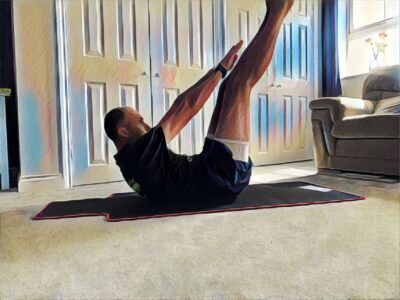
Bodyweight Crunches
How to complete this properly – Laying on your back bend your knees and have your feet planted on the floor. Place your hands behind your head with your elbows out of your eye line. Elbows pushed back. Lift your upper body without pulling your head to “crunch” your middle. As you get to the top of the crunch hold for a couple of seconds each time. Do not lift your lower back from the ground only the shoulders. This is not about making huge movements but intense squeezing of the core.
Complete 10 repetitions.
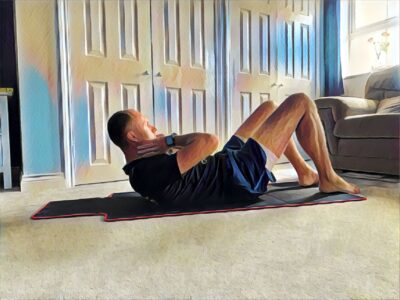
Double Bicycle Kicks
How to complete this properly – Laying on you cycle your legs bringing your opposite elbow to each knee. This is a standard well established exercise but the intensity is increased by doubling up on each side. So cycle each leg twice in and out before moving to the next leg. The core will engage fully as you enter the second in/out for each leg and increase the effectiveness of the exercise.
Complete 10 repetitions each side (20 times in and out).
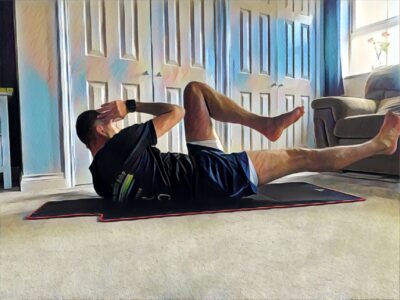
Plank feet in and out
How to complete this properly – On your front in the plank position holding your bodyweight on your elbows. The in and out element is that you “jump” between your feet together and feet apart about 2 feet. As you jump between positions you engage your core that provides the strength to move between positions.
Complete 10 repetitions.
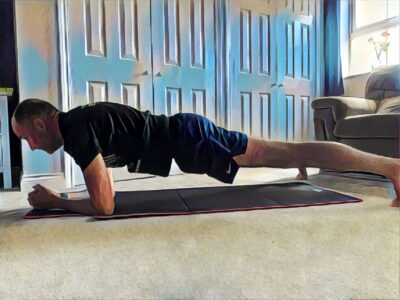
5 Oblique Workouts
Russian Twists
How to complete this properly – Sitting on your tail bone upright with your feet elevated you rotate to touch side to side of your body. The more you twist your body to allow both hands to touch each side on the floor the more you exercise the obliques during the workout. If you can keep your legs straight but if this is too challenging bend the knees to reduce pressure on your core.
Complete 20 repetitions (10 touches on each side).
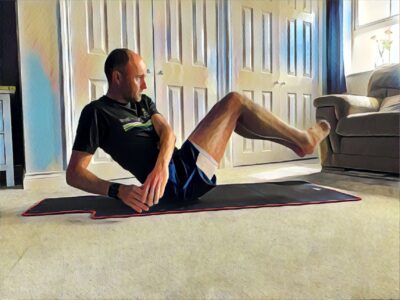
Plank Knees to Elbow
How to complete this properly – From the plank position with your hands supporting your upper body you seek to keep your bum down through the exercise in a straight body position. Taking it in turn with each leg bring your knee up to meet the elbow. Left knee to left elbow. Right knee to right elbow. Taking time over each repetition make sure the form is good bringing the knee as far up as possible.
Complete 20 repetitions (10 on each leg)
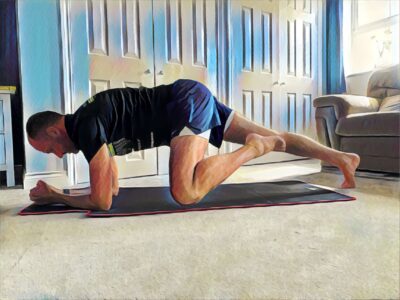
Switching mountain climbers
How to complete this properly – In the plank position on your hands you complete similar activity to the plank knees to elbows. The change for switching mountain climbers is that you complete more of a horizontal running motion. As you “run” with each leg you bring it across your body to engage the obliques with more engagement the more your rotate at the core.
Complete for 30 seconds.
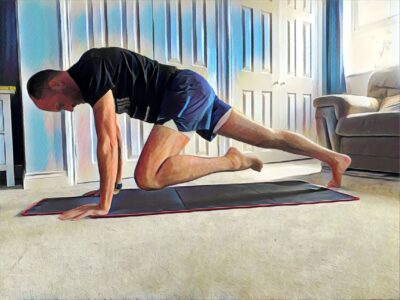
Side plank leg raises
How to complete this properly – Begin with the side plank position resting on your elbow with your feet resting on top of each other. Lift the upper foot up and down raising it around 1-2 foot above the lower foot. Complete on each side raising the upper leg on the right and left sides. Focus on keeping your middle elevated and not sagging in the middle.
Complete 10 lifts on each side.

Windscreen Wiper Leg Raises
How to complete this properly – Laying flat on your back with your legs in the air and straight. Use your arms laid out either side of you for balance and move your legs left and right in a windscreen wiper motion. As you twist your body to allow the legs to drop you engage your obliques. Don’t allow the shoulder to lift and only lower the legs as far as this is comfortable.
Complete 10 on each side.

5 Lower Abs Workouts
Flutter Scissor Kicks
How to complete this properly – Laying on your back you elevate your feet around 12-24 inches from the ground. Lightly kicking each foot in a similar style to flutter kicks you keep your feet elevated. By keeping the feet elevated with the light kicking motion you engage your lower core.
Complete for 30 seconds.
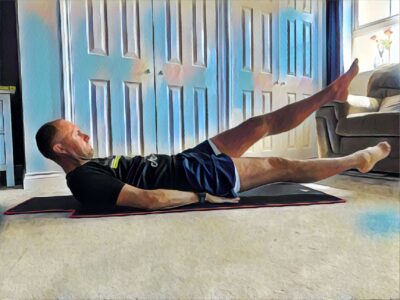
Seated in and outs
How to complete this properly – From a seated position with your knees lean back supporting your weight with your hands. Extend your legs out in front as you lean back. Bring the feet back into your body as you become more upright without touching the ground. Focus on slow movements keeping your legs low and fully extending your legs as you stretch them out.
Complete 10 times.

Laying leg raises
How to complete this properly – Laying flat on your back with your legs extended straight elevated slightly above the ground. Lift your legs together up to a vertical position and then lower then slowly to just above the ground level making sure not to touch the floor. Repeat this lifting our legs up to the vertical position each time. Be careful not to swing your legs and tuck your hands under your bum if needed for stability.
Complete 10 times.
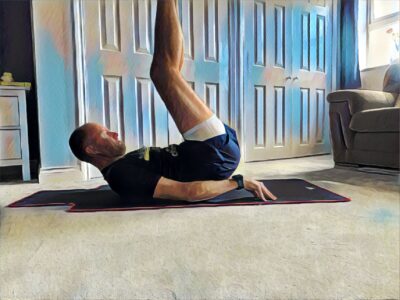
Plank Back and Forth
How to complete this properly – From the plank position with your body supported by your elbows this variation dials up the lower oblique engagement. Shift your body weight forwards so you extend to be on your tip toes and hold. Then return back shifting your weight backwards. As you move back and forth from the neutral plank position you intensify a normal plank position.
Complete for 30 seconds.
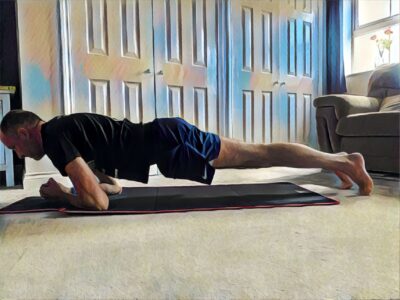
Leg Lifts
How to complete this properly – Laying on your back with your legs upright you lift your feet up skywards. This motion lifts your bottom off the ground and the objective is to lift this and crunch your lower abs as you lift. Lowering your bum slowly each time to then return with the leg lifts. Don’t swing the legs down and up using them as a pendulum ensuring you maintain form and controlled elevation.
Complete for 10 repetitions.

Why is Core Strength Important for Triathletes?
Having a strong core is essential for all three triathlon disciplines. With a complex set of technical sports to master having correct form and posture will aid speed and stamina. As you grow more tired maintaining good form in each discipline through core strength will make maintaining speed more possible.
Core Strength for swimming
Triathlon swimming tends to involve using a wetsuit that compensates for poor core strength. This buoyancy helps but without core strength your form will fade and pace through the swim degrade. A stable core that you can keep with as streamlined a body position as possible helps you create a small surface area through the water. Don’t let you feet drag!
With strong core you also are able to keep your rotation through the water. This controlled rotation allows you to keep your kick narrow in a flutter formation preventing stray legs flaying out. In turn this means you can concentrate on the engine with your arms powering through the water.
Core Strength for Cycling
As you put on the miles you may have experienced you have back pain and shoulder pain before the legs fail you. This can be from a poorly fitted bike which will always restrict your endurance range but can be from poor posture on the bike.
Having a strong core allows you to create a strong foundation on the bike reducing the side to side swinging. This reduces the risks of injury in your upper body as you manage the energy generated through your legs with a strong trunk and upper body. Essentially if you want to go longer then core strength helps reduce fatigue and stay more efficient.
Core Strength for Running
Running is brutal on your body. Having run today and now enjoying the usual hip and knee aftermath I can testify to that. As a triathlete by the time you lace up the running shoes you are already fatigued. That is the case for everyone from Sprint to Ultra Ironman triathlon. If you have worked on your core strength you can carry your upper body better retaining running form for longer.
This improved posture for running allows the legs to work with you staying more upright and less motion in your upper. The other benefit for training from a strong core is reduced likelihood of injury. The more your form falls apart at the end of your run you increase chances of an injury. Every triathletes nemesis. That and punctures!
If you want to go long and tackle the marathon in an Ironman distance triathlon this training is more important than ever. Core strength will aid technique through the run and help you reach the finish line. Still with a smile for the camera!
10 minute free triathlon core strength training workout
Follow the steps outlined below for an effective 10 minute workout that you can complete anywhere. No equipment needed and no excuses.
- V-Ups x 10 repetitions
- Inverted Toe Touches x 10 repetitions
- Bodyweight crunches x 10 repetitions
- Double Bicycle Kicks x 10 repetitions each side (twice on each side)
- Plank feet in and out x 10 repetitions
- Russian Twists x 20 repetitions (10 touches on each side)
- Plank knees to elbows x 20 repetitions (10 on each leg)
- Switching mountain climbers x 30 seconds
- Side plank leg raises x 10 lifts on each side
- Windscreen wiper leg raises x 10 on each side
- Flutter scissor kicks x for 30 seconds
- Seated in and outs x 10 times
- Laying leg raises x 10 times
- Plank back and forth x 30 seconds
- Leg lifts x 10 repetitions
Core strength is a real value for swimming. If you still need more core support especially with your swimming check out our article on Buoyancy Shorts: Do they work? Useful to compliment core strength training for triathletes and swim faster.
Why Sit-ups Might Be Bad For You?
Are you looking to strengthen your core? You may have been told that sit-ups are the key to achieving those a strong core and abs. But what if I told you that sit-ups might not be as beneficial as you think? In fact, they could be causing more harm than good. Are there hidden dangers in doing sit-ups and why you should reconsider incorporating them into your fitness routine. From potential injuries to ineffective results. What is the science behind why sit-ups might not be the best exercise for your core.
Why are Sit-Ups so Popular?
Sit-ups have long been the go-to exercise for achieving a strong and defined core. Many fitness experts share the message that sit-ups are an effective way to target the abdominal muscles. The popularity of sit-ups is due to their simplicity and the perception that they show quick results.
One of the main reasons sit-ups have gained popularity is their ability to target the rectus abdominis. This is the muscle responsible for gaining a six-pack. Sit-ups involve flexing the spine while lifting the upper body off the ground. This places a significant load on the abdominal muscles. This movement is believed to effectively engage and strengthen the core. However, it’s important to consider the potential dangers that come with this exercise.
While sit-ups may work the abdominal muscles, they also place a considerable strain on the spine. The repetitive and forceful flexion of the spine during sit-ups can lead to various spinal injuries. These can include herniated discs, vertebral fractures, and lower back pain. Additionally, the excessive strain on the neck and hip flexors during sit-ups can cause discomfort and imbalances in other muscle groups. This is why a more complete core routine as outlined above gives better results.
The Impact of Sit-ups on Other Muscle Groups
While sit-ups are primarily thought to target the abdominal muscles, they also engage other muscle groups. These include the hip flexors, chest, and neck muscles. However, the impact of sit-ups on these muscle groups may not always be positive. In fact, the repetitive nature of sit-ups can lead to muscle imbalances and discomfort in these areas.
Sit-ups require the hip flexors to contract forcefully to lift the upper body off the ground. Over time, this can cause tightness and imbalances in the hip flexor muscles. This can lead to hip pain and limited range of motion. This can have a negative impact on daily activities and other exercises that rely on the hip flexors, such as squats and lunges.
Additionally, the strain placed on the neck during sit-ups can lead to discomfort and even headaches. The neck muscles are not designed to withstand the repetitive flexion and extension required by sit-ups. As a result, individuals who regularly perform sit-ups may experience neck pain and stiffness, which can interfere with their overall well-being.
Considering the potential dangers and negative impact on other muscle groups, it’s essential to explore alternative exercises that provide similar or even superior results without the associated risks. The core strength training routine for triathletes provides a range of exercises that strengthen your core across all muscle groups.
Why Proper Form and Technique is Vital in Sit-ups
It’s important to remember that performing any exercise with improper form and technique can lead to injuries. If you choose to include sit-ups in your fitness routine, it’s crucial to prioritize proper form and technique to minimize the risks associated with this exercise.
How to do Sit-Ups Correctly
One of the most common mistakes people make when performing sit-ups is pulling on the neck or using the hands to assist in the movement. This not only places unnecessary strain on the neck but also reduces the effectiveness of the exercise. Instead, focus on engaging the abdominal muscles and using them to lift the upper body off the ground. Keep your neck neutral and your hands gently touching your temples or crossed over your chest.
Additionally, it’s important to avoid excessive spinal flexion during sit-ups. Instead of rounding your back as you lift your upper body, aim to maintain a slight arch in your lower back. This helps to distribute the load more evenly and reduces the strain on the spine. If you find it challenging to maintain proper form, consider using an exercise ball or a decline bench to perform sit-ups, as these can provide additional support and stability.
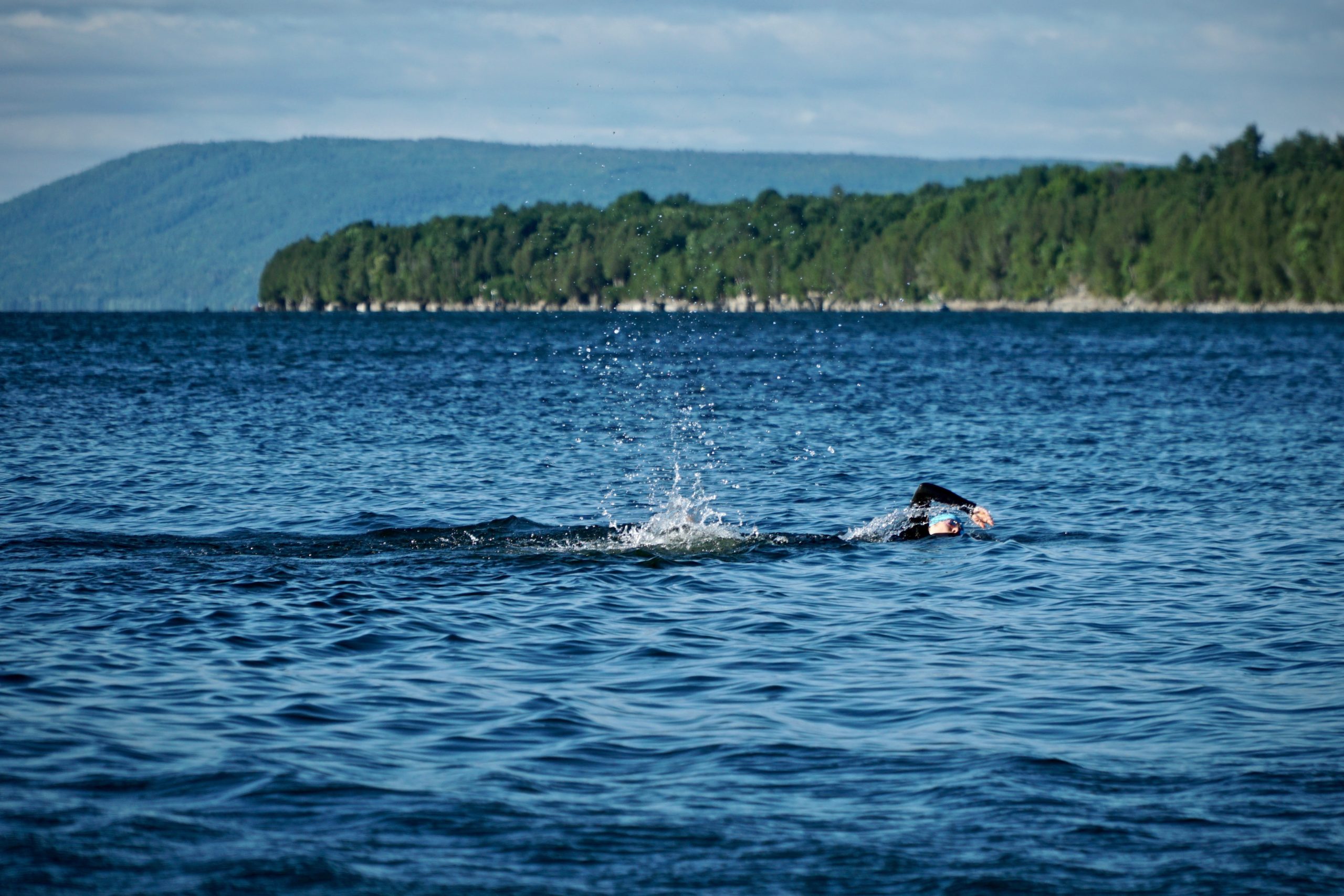

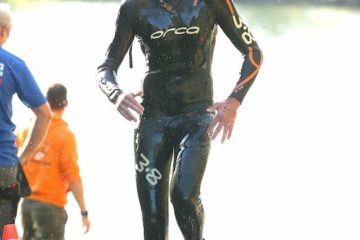
1 Comment
Do Buoyancy Shorts Work? Transform your swim training efficiency - REAL Athletes - TRUSTED Reviews · 28/08/2020 at 9:33 am
[…] and improve your stroke rather than rely on buoyancy to correct your drag. Check our article on core strength training for triathletes with 15 essential exercises and a free 10 minute […]